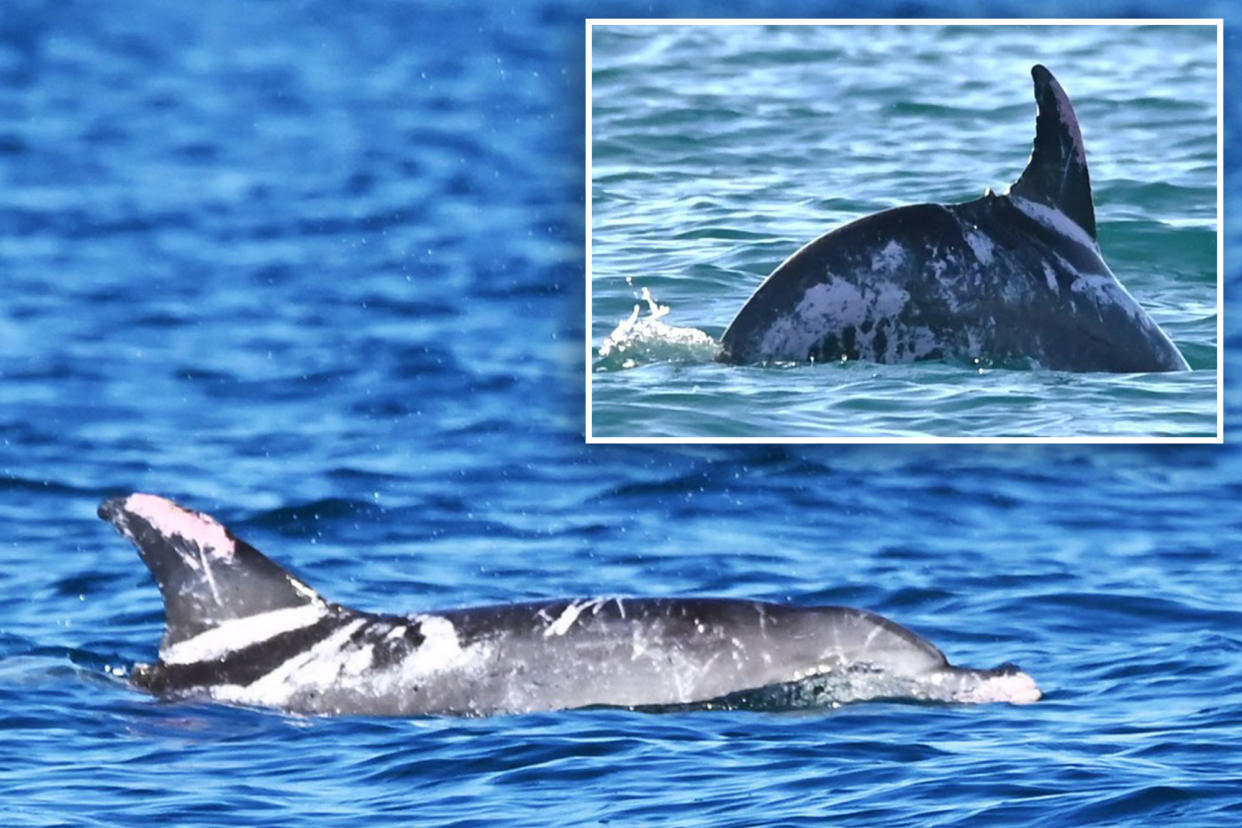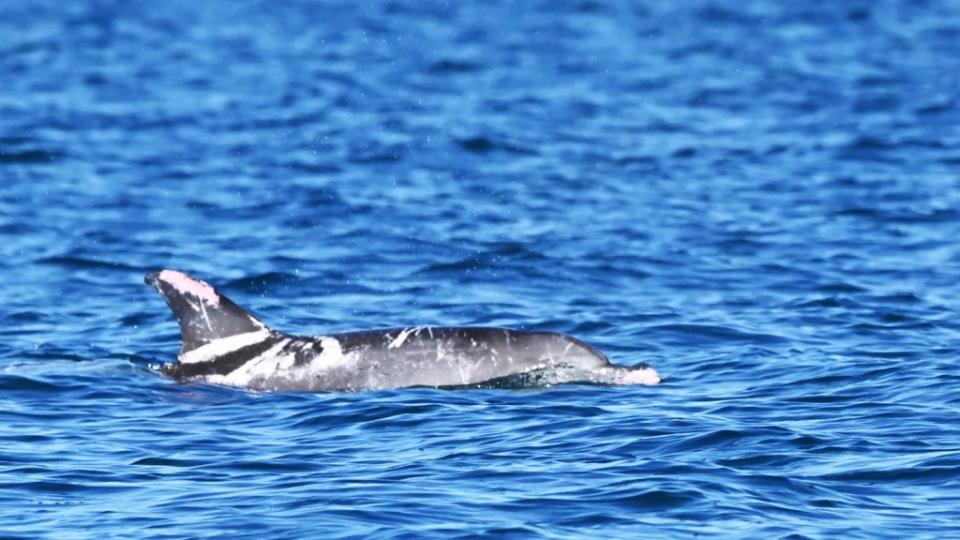One of the world’s rarest and most unusually colored dolphins discovered in Australia

One of the world’s most unusually colored dolphins was discovered in Australia.
Speckles, a patchy black-and-white bottlenose dolphin, stunned researchers from the University of the Sunshine Coast, who were on Hervey Bay, a Whale Heritage Site on the coast of Queensland.
“It was near the end of the day, we were about to head in and we saw this massive leap, this massive splash so we thought we’d go over to investigate,” researcher Georgina Humes told the Australian Broadcasting Corporation.
The team determined that Speckles is an extremely rare piebald dolphin, having a genetic mutation that causes a partial loss of pigmentation, resulting in its unique coloration.
Common bottlenose dolphins are grey.
“We don’t know if it’s a male or female, we believe it has a genetic mutation,” Hume said of Speckles, who has a marked dorsal fin and white stripes on its body and stomach.
“It’s pretty exciting, we looked it up and we found out that no one had ever really documented any sightings of these piebald dolphins in Australia.”



Speckles were spotted in September 2022 and since then, researchers have been looking into how rare of a finding it was.
They learned it was one of six cases in the world where photographic evidence of piebald dolphins had been taken and only the second to be recorded in the entire southern hemisphere.
“I’ve worked in this field for about 15 years across three different continents and I’ve never seen it myself firsthand so once we brought back the photos it was a pretty exciting afternoon for us,” University of the Sunshine Coast ecologist Alexis Levengood told the outlet.

